I’m continuing to process the cross dyed samples (tencel warp, alpaca weft, dyed in fiber-reactive and then in acid dyes). About half of them are finished, the other half will be discharged and redyed in some fashion.
Here are some of the results so far:

This looks pretty good; the background provides texture but is not too intrusive.
This, on the other hand, doesn’t work well at all:
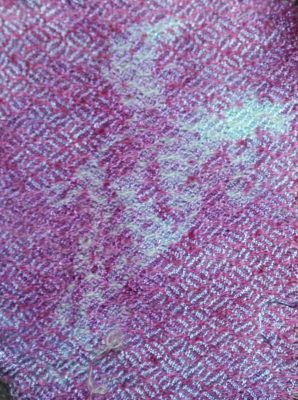
The background pattern is so complex, and so high-contrast, that you can barely make out the horse.
My favorite horse pattern is actually this one:
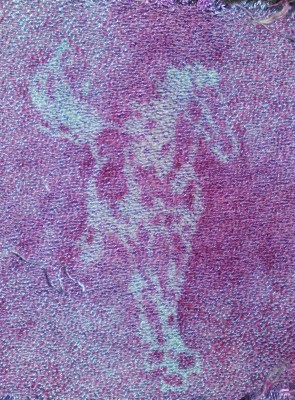
The crepe weave is my unexpected favorite for the dyed samples. I hadn’t expected much out of it, but it gives a complex textured background that has just enough additional contrast to provide an interesting background (vs. the 2-2 and 1-3 twills, which aren’t visually very interesting). But it’s not powerful enough to overwhelm, even when faced with a complex and delicate figure.
Here it is again, without the figure:
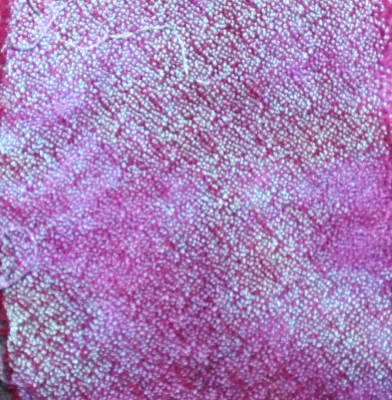
I really like the “textured” look of the crepe weave, even without a strong image.
Meanwhile, here are a few high-contrast woven patterns with low-contrast dye jobs:
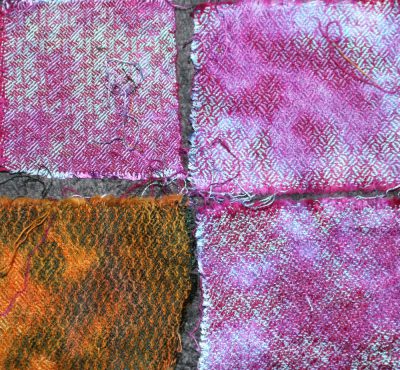
These are all pretty successful. Later I am going to try discharging and re-dyeing an image on top of some of them.
Here is a pair of low-contrast dye jobs on a relatively humdrum background:

I like this one as well, though I would probably use it as the background for an image rather than use sizable chunks of it as-is.
This, on the other hand, is not successful – there is simply too much going on. The eye doesn’t know where to look first, or where to rest! So (not too surprisingly) high-contrast dyejobs don’t mix too well with busy backgrounds.
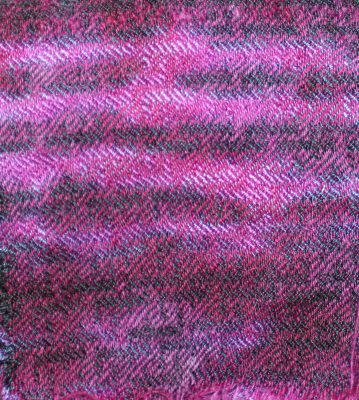
And, finally, two simple stenciled images:
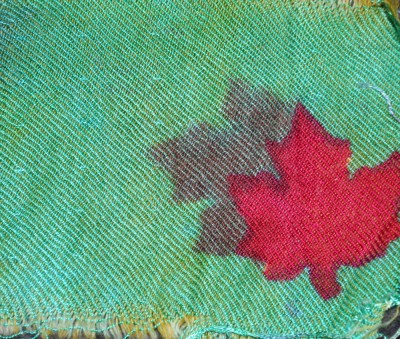
This one (above) is interesting because of the “ghost image”. It is a 3-1 twill with the cellulose side dominant, so the fuchsia fiber-reactive dye appears as a strong image, whereas the red acid dye is much less obvious, more like a shadow. This could be used in designing.
And this one I like because the complex weave structure adds interest to the simple image, without dominating:
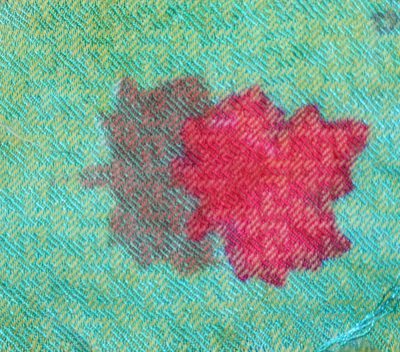
That’s it so far! More to come later in the week (or over the weekend), when I have a chance to finish the discharged-and-redyed samples.

You do the most interesting experiments! I really like the samples without the stenciling, it is interesting enough on it’s own really. Wonderful.
These are wonderful!
These are wonderful and I too have been experimenting with the effects of fiber reactive dyes and traditional shibori techniques on handwoven fabric. Thank you so much for your generous sharing of your knowledge.
Tien, these are very interesting. I especially enjoyed the ones with the leaves. Betz